- Home
- Stephen Baxter
Phase Space Page 12
Phase Space Read online
Page 12
She felt a surge of joy. And there was something more, something just beyond her grasp –
It was gone. She was suspended in the structureless void again. Himmelfarb grasped her hand.
Boyle was curled over on himself, his eyes clamped closed.
Philmus said, ‘I saw –’
Himmelfarb said, ‘It doesn’t matter. We all see something different. And besides, it was only a Virtual shadow … What did you feel?’
Philmus hesitated. ‘As I do when I solve a case. When the pieces come together.’
Himmelfarb nodded. ‘Cognition. Scientists understand that. The ultimate cognition, knowing reality.’
‘But now it’s gone.’ She felt desolate.
‘I know.’ Himmelfarb’s grip tightened. ‘I’m sorry.’
The Monsignor, his voice weak, murmured, ‘“I saw gathered … / Bound up by love in a single volume / All the leaves scattered through the universe; / Substance and accidents and their relations, / But yet fused together in such a manner / That what I am talking about is a simple light …”’
‘Dante was very precise about how he interpreted what he saw,’ said Himmelfarb. ‘This is Aristotelian physics. “Substances” and “accidents” describe phenomena and their relationships. I believe that Dante was trying to describe a glimpse of the unification of nature.’
‘Yes,’ Philmus whispered.
‘And then he saw a paradox that he expresses by an image. Three circles, superimposed, of the same size – and yet of different colours.’
‘Separated by a higher dimension,’ Philmus guessed.
‘Yes. In the high-dimensional artefact Dante saw a metaphor for the Trinity. God’s three personalities in one being.’
‘Ah,’ said the Monsignor, cautiously uncurling. ‘But you saw –’
‘Rather more. I knew enough physics –’
‘This is the basis of the new unified theory,’ Philmus said. ‘A unification of phenomena through the structure of a higher-dimensional space.’
Himmelfarb’s face was turning to pixels again. ‘It isn’t as simple as that,’ she said. ‘The whole notion of dimensionality is an approximate one that only emerges in a semi-classical context – well. I don’t suppose it matters now. I wrote it down as fast as I could, as far as I could remember it, as best I could express it. I don’t think I could give any more.’
The Monsignor looked disappointed.
Philmus said, ‘And then –’
‘I killed myself,’ Himmelfarb said bluntly. Bathed in sourceless light, she seemed to withdraw from Philmus. ‘You have to understand. It wasn’t me. I had hoped to find enlightenment. But I was not enhanced. It was the organelles’ vision which leaked into my soul, and which I glimpsed.’
‘And that was what you could not bear,’ the Monsignor said. Hanging like a toy in mid-air, he nodded complacently; evidently, Philmus thought, he had learned what had come to find, and Himmelfarb’s essential untidiness – so distressing to Boyle’s bureaucrat’s heart – was gone. Now she was safely dead, her story closed.
Philmus thought that over, and decided she would prosecute.
But she also sensed that Boyle knew more than he was telling her. And besides … ‘I think you’re wrong, Monsignor.’
Boyle raised his eyebrows. Himmelfarb hovered between them, saying nothing.
‘Eva didn’t quite finish showing us the last canto. Did you?’
The priest closed her eyes. ‘After the vision of the multidimensional circle, Dante says: “That circle … / When my eyes examined it rather more / Within itself, and in its own colour, / Seemed to be painted with our effigy …”’
‘I don’t understand,’ the Monsignor admitted.
Philmus said, ‘Dante saw a human face projected on his multidimensional artefact. He interpreted whatever he saw as the Incarnation: the embodiment of God – beyond time and space – in our time-bound mortal form. The final paradox of your Christian theology.’
Boyle said, ‘So the ultimate vision of the universe is ourselves.’
‘No,’ Himmelfarb snapped. ‘Today we would say that we – all minds – are the universe, which calls itself into existence through our observation of it.’
‘Ah.’ Boyle nodded. ‘Mind is the “eternal light, existing in ourselves alone, / Alone knowing ourselves …” I paraphrase. And this is what you saw, Eva?’
‘No,’ said Philmus. She felt impatient; this insensitive asshole was supposed to be a priest, after all. ‘Don’t you see? This is what Himmelfarb believed her passengers, the sentient organelles, would see next; she had the guidance from Dante’s sketchy report for that. And that’s what she wanted to prevent.’
‘Yes.’ Himmelfarb smiled distantly. ‘You are perceptive, officer. Are you sure you aren’t a Catholic?’
‘Not even lapsed.’
Himmelfarb said, ‘You see, Dante’s quest did not end with discovering an answer, but with the end of questioning. He submitted himself to the order of the universe, so that his “desire and will / Were … turned like a wheel, all at one speed, / By the love which moves the sun and the other stars”.’
Philmus said, ‘And that was the peace the organelles achieved, the peace you glimpsed. But you knew, or feared, you couldn’t follow.’
‘And so,’ said Boyle, ‘you destroyed yourself –’
‘To destroy them. Yes.’ Her expression was bitter. ‘Do you understand now, Monsignor? Of course this is the end of your religion – of all religion. We are accidental structures, evanescent, tied to time and doomed to oblivion. All our religious impulse, all our questing, all our visions – just a pale shadow of the organelles’ direct experience. They have God, Monsignor. All we have are Dante dreams.’
Philmus said, ‘You were happy to be Dante. But –’
‘But I refused to see them go where I couldn’t follow. Yes, I could be Dante. But I couldn’t bear to be Virgil.’
‘I absolve you of your sin,’ the Monsignor said abruptly, and he blessed Himmelfarb with a cross, shaped by his right hand.
Himmelfarb looked shocked – and then an expression of peace crossed her face, before light burst from within her, dazzling Philmus.
When her eyes recovered Philmus was embedded in space and time once more: alone with the Monsignor, in the sixteenth century corridor, where the willow branches were merely painted.
Philmus met the Monsignor one more time, at the conclusion of the hearing in the New York UN building. The UN Commission had found against the Vatican, which would have to pay a significant fine.
Boyle greeted Philmus civilly. ‘So our business is done.’
‘Do you feel we reached the truth, Monsignor?’
He hesitated. ‘I don’t know what to believe. The analysis of Eva’s monograph is continuing. The NASA people have taken up her suggestion of alternate evolutionary directions for macromolecules on Mars, and the exobiologists are modelling and proposing missions. We haven’t been able to recreate Eva’s lab results: to retrace her “footprints in Hell”, as Dante would say. Perhaps it was all a fever dream of Eva’s, brought on by overwork and too much study. It wouldn’t be the first such incident in the Church’s long history.
‘Or perhaps we are indeed hosts to another sentience. Perhaps one day it will awaken fully. If it does, I hope it will treat us with compassion. And what do you believe, officer Philmus?’
I believe that whatever the Vatican finds, whatever it knows, it will keep to itself, in the Secret Archive.
‘I’m reading Dante.’ It was true.
The Monsignor smiled. ‘But you hate poetry.’
‘It’s the only place I can think of where I might find the answers. Anyhow, it’s something to do in the small hours of the night. Better than –’
He said softly, ‘Yes?’
‘Better than to lie there listening to my body. Wondering who else is home.’
He whispered, ‘Dante dreams? You too?’
‘Monsignor – you realize that if Eva wa
s right, she achieved first contact.’
His face was calculating, but not without sympathy. ‘The Vatican is very old, officer. Old, and secretive. And – though without the tools of modern science – we have been investigating these issues for a very long time.’
She felt her pulse hammer. ‘What does that mean?’
‘There are many ways to God. Perhaps Eva indeed made contact. But – the first?’
He smiled, turned and walked away.
WAR BIRDS
November 1969:
The dust of the Moon crunched under Burdick’s feet. His footprints, in the low sunlight, under the black sky, were clear and sharp, embedded in billion-year-old regolith.
When Burdick bent and ran his hand through the dirt, it looked a lot darker: almost black, like charcoal. The dirt gave easily for the first couple of inches, but then resisted his gloved fingers.
They’d brought shovels. But it wasn’t going to be so easy to dig out graves, here on the Moon.
Here came Harry Singer, his commander, bouncing across the flat, pitted surface of the Sea of Tranquillity. Harry was humming his dumb little country tunes. He had been on a high since that moment when he had brought Guardian, still fat on fuel, drifting over this enigmatic ground, and they’d spotted Eagle itself, glittering like a toy against the greyness. Burdick understood how he felt. The tough part of the mission was still to come. Let Harry savour the triumph of the landing.
Burdick felt on a high himself. At thirty-nine, after eight years in the space programme, he was no longer a rookie. Of course after Apollo 12 was redirected, he wasn’t where he’d expected to be, in the Ocean of Storms. And he wasn’t going to be doing all the geology and stuff he’d been trained to do. But he’d never made much sense of all the science shit anyhow.
And here he was, after all, on the surface of the Moon itself.
Harry was looking at him. He straightened up.
It was time to do his duty.
Side by side, two USAF officers on the surface of the Moon, they faced Eagle.
Neil Armstrong’s LM was a spidery construct of aluminium sheets and struts, sitting there like a little house. It didn’t show many signs of its four-month stay. Maybe the gold insulation blanket on that descent stage was a little pitted. Maybe the colours of the Stars and Stripes painted there had faded a little.
But the four spider legs had collapsed. When it exploded, the boxy heart of the descent stage had just crumpled up and fallen against the dust. The bulbous ascent stage looked intact, but it was tipped over through thirty or forty degrees, and Burdick could see a split down one seam. Eagle sagged like a deflated balloon.
The surface here was littered by bits of twisted-up aluminium hull, and by shards of blown-out insulation blanket, a raying that overlaid the subtler disturbance of the LM’s descent engine fire. But there were no footprints here. Nobody had climbed down from this LM. Armstrong and Aldrin had been the first humans to reach another world, and had lived less than a minute to enjoy it.
‘Let’s get it over,’ Singer said.
‘Yeah …’
Something was glittering, at the edge of Burdick’s vision. Something metallic. At first he thought it was some other piece of the Eagle, broken off and hurled over the regolith.
But that couldn’t be right. It was just too big.
It was the size and shape of a steel bathtub, mounted on six, no, eight spidery wheels. There was an open lid encrusted with what looked like solar cells. A couple of antennae, cones and rods, stuck out of the interior.
Something moved: two big camera lenses, fixed to the front of the car, swivelling up to inspect him.
‘I don’t believe it,’ Singer said. ‘It’s a fucking Lunokhod.’
‘The Soviets.’
‘Yeah. Come to see what they did. Come on,’ said Harry Singer. And he picked up a Moon rock.
Burdick bent, stiff in his pneumatic suit, and got hold of the biggest boulder he could find. It would have been too heavy for him on Earth, probably, and here he could feel its mass, liquidly resistant to motion. Like a miniature Moon itself, the rock was pitted with craters, from a fingertip’s width all the way down to fine little pinholes. It was probably billions-of-years old.
Burdick and Singer stalked across the shining surface, and lifted up their Moon rocks, and began to beat the Lunokhod, smashing away the antennae and the fragile camera assemblies and the sheet of solar cells, their ancient rock weapons splintering in their hands, a quarter of a million miles from home. The sun was bright and in Burdick’s eyes, and, under his Snoopy hat, he could feel sweat starting over his brow.
August 1981:
Control, this is Aldrin. Commander’s voice check, over. Roger, over. Control, this is the pilot. Voice check, over. Roger, over …
The sun was bright and in his eyes, and, under his peaked Air Force officer’s cap, Burdick could feel sweat starting over his brow.
It was early morning. He was looking east, right into the sun. Beyond the tree line, there was Launch Complex 39, the twin pads loaded up with their Shuttles: 39-B to the left, with Aldrin, 39-A to the right, with Enterprise. Enterprise was due for launch tomorrow, and was still enclosed in its rotating structure, but Aldrin was exposed, ready to fire.
He could smell the sea. There were still bands of mist lingering over the flat salt marshes, and he could hear the cry of the gulls wheeling around the gantries.
Burdick was glad to get out of the Kennedy Space Center executive offices and come up here on the roof to see the launch. As Chief Astronaut it was his duty to show up here rather than in the Firing Room, which would be his inclination. But the astronauts’ families were here, and downstairs it was like a kindergarten. The youngest kids had soon got bored waiting for the launch and were crawling around over the floor, playing with orbiter models and mission patches.
He was kind of pleased that his own son, Phil Junior, ten years old, eschewed such games. Today, for instance, he was off with the Eagle Scouts. It would have been nice to have him up here, Burdick thought, but it was more important to give the little soldier his independence.
This roof was full of VIPs and NASA brass. Here was the new President, Reagan himself, with his first lady, grinning and glad-handing, with Richard Nixon, rehabilitated as Reagan’s secretary of state. And there was Curtis LeMay, the old Cold Warrior, brought out of retirement to serve as Air Force chief of staff, following his commander and chomping away on one of his trademark cigars, squat and bustling and competent.
All the civilians were wearing big wide-brimmed hats and sun-block, even Reagan. If you worked here you were supposed to wear filters over your mouth and nose. Some of the pad rats, it was said, had come down with lesions seared into their lungs. But to Burdick that was all bullshit. The ozone layer may or may not have been depleted by all these space launches. And he knew some of the techs were concerned about launching at the height of summer, when all that u-v etched away at the perishables on the orbiter stack. But then those guys beefed about launching in winter too, when ice clustered on the stack and the perishable components, rubber and plastic, got too stiff.
So there was more u-v. So they all had to paint their houses more often these days. So what? What the hell were they supposed to do? Stop launching?
The dominant object in his skyline was the VAB, the Vehicle Assembly Building, a monstrous black-and-white cube, built to assemble Moon ships. The cliff-face wall of the VAB was still scarred by the splash of the petrol bombing, where Star Trek fans had broken in to protest at the name of their beloved fantasy spaceship being given to a Shuttle orbiter, a war bird.
There was a big parking lot at the base of the VAB, pretty much deserted today except for the buses which had brought in the press guys. He remembered how different it was in the sixties, when the lot was always jammed with rows of vehicles, gleaming in the Florida sun like so many metal beetles. But the road traffic had never recovered from the oil price hike that had followed Reagan’s nuking of Ira
n, despite the peacemaking efforts of the restored Shah with those Arabs.
As the mist burned off, over on the horizon, he could see the gleaming white of the orbiter, Aldrin, against its orange External Tank. He needed his binoculars to see the four solid rocket boosters clustered around the orbiter. This was a stretched Shuttle configuration, designed for heavy lift, a hundred and thirty-five tons to low Earth orbit, more than twice the baseline design’s capacity. And he knew Enterprise, right now, was being fitted with the new liquid fuel boosters, another upgrade path.
Today’s launch would be the fourth flight of the four-booster configuration, and the first orbital test of the NERVA 3 nuclear tug. That NERVA was going to be sent around the Moon, unmanned, and then, the plan went, later in the year there would be a couple of manned test flights, and maybe a Moon mission as early as next year. It was all part of the plan to establish a nuclear silo up there on the Moon: more silent sentinels, warning off any possible aggressors.
The NERVA was the reason there were so many VIPs here, on this roof and in the VIP stand.
This would be the twenty-first Shuttle launch of the year, from the Cape and Vandenburg, and the ninety-first of the programme in all, since the first successful orbital flight, bang on schedule in 1977. This year alone there ought to be forty-four launches, maybe fifteen of them USAF missions, using the Air Force’s own two dedicated orbiters launched out of Vandenburg.
The Shuttle had turned into a magnificent success. Everyone had been determined to make it so, NASA, USAF and contractors alike. And Burdick, since he’d transferred from the Moon programme after it was closed down with Apollo 12, had been proud to play his part in that.

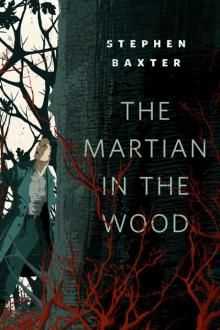 The Martian in the Wood
The Martian in the Wood THE H-BOMB GIRL
THE H-BOMB GIRL World Engine
World Engine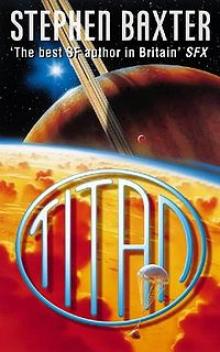 Titan n-2
Titan n-2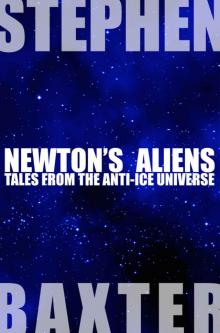 Newton's Aliens: Tales From the Anti-Ice Universe
Newton's Aliens: Tales From the Anti-Ice Universe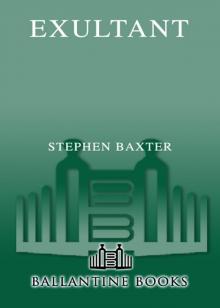 Exultant
Exultant Manifold: Origin
Manifold: Origin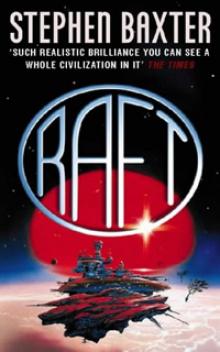 Raft xs-1
Raft xs-1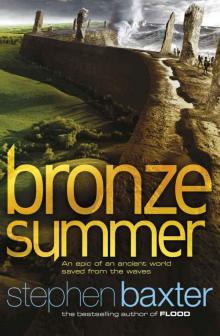 Bronze Summer n-2
Bronze Summer n-2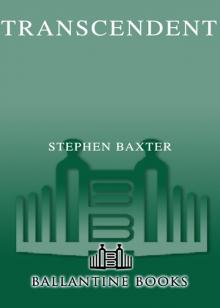 Transcendent
Transcendent Stone Spring
Stone Spring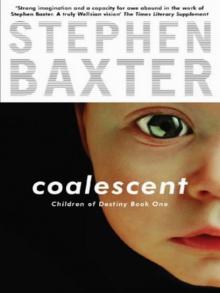 Coalescent
Coalescent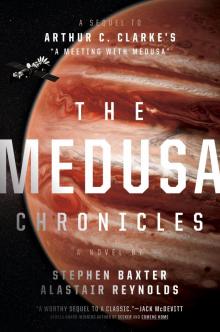 The Medusa Chronicles
The Medusa Chronicles Origin m-3
Origin m-3 Silverhair tm-1
Silverhair tm-1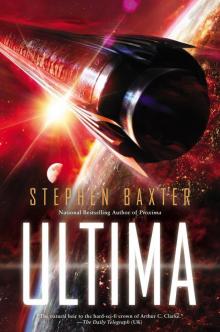 Ultima
Ultima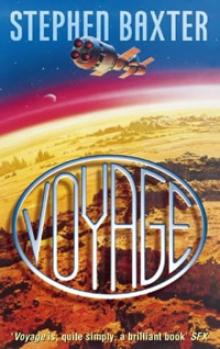 Voyage n-1
Voyage n-1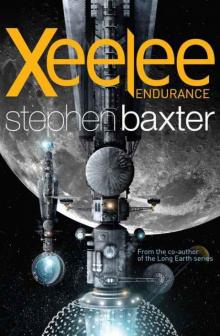 Xeelee: Endurance
Xeelee: Endurance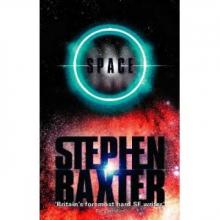 Space m-2
Space m-2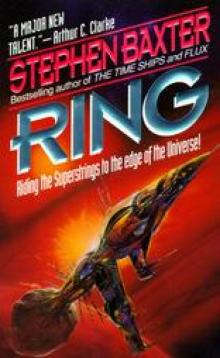 Ring xs-4
Ring xs-4 Raft
Raft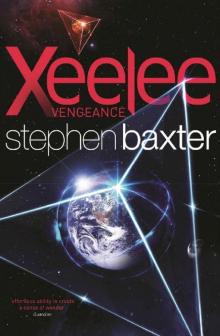 Xeelee: Vengeance
Xeelee: Vengeance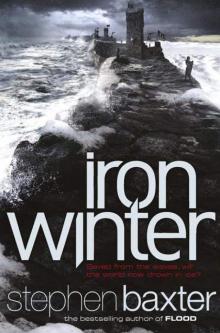 Iron Winter n-3
Iron Winter n-3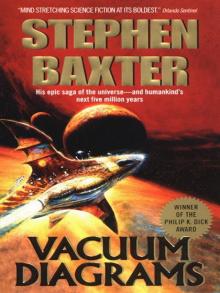 Vacuum Diagrams
Vacuum Diagrams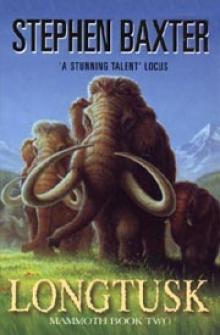 Longtusk tm-2
Longtusk tm-2 Proxima
Proxima Evolution
Evolution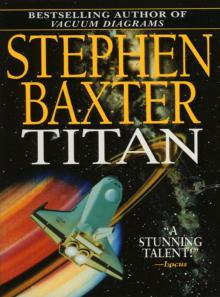 Titan
Titan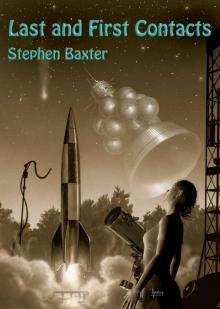 Last and First Contacts (Imaginings)
Last and First Contacts (Imaginings)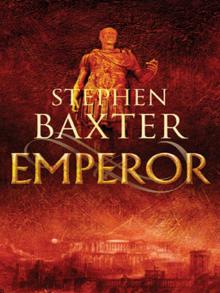 Emperor
Emperor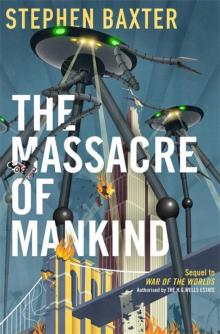 The Massacre of Mankind
The Massacre of Mankind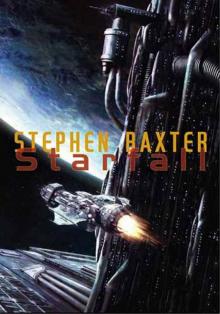 Starfall
Starfall Doctor Who - The Wheel of Ice
Doctor Who - The Wheel of Ice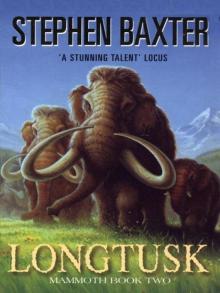 Longtusk
Longtusk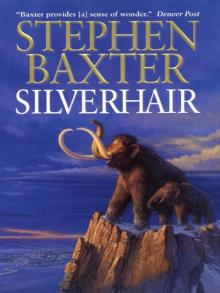 Silverhair
Silverhair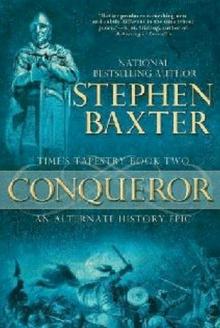 Conqueror tt-2
Conqueror tt-2 Flood
Flood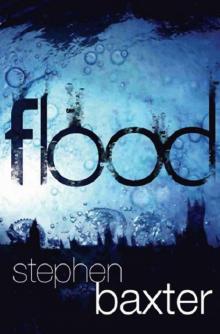 Flood f-1
Flood f-1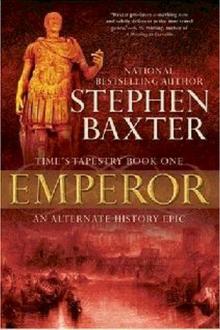 Emperor tt-1
Emperor tt-1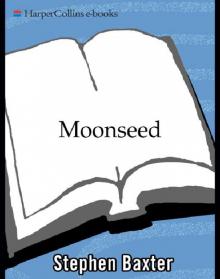 Moonseed
Moonseed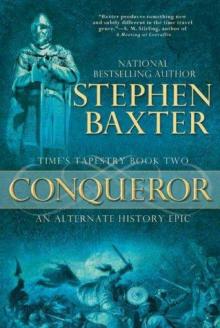 Conqueror
Conqueror Timelike Infinity xs-2
Timelike Infinity xs-2 The Ghost Pit
The Ghost Pit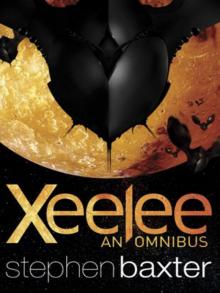 Xeelee: An Omnibus: Raft, Timelike Infinity, Flux, Ring
Xeelee: An Omnibus: Raft, Timelike Infinity, Flux, Ring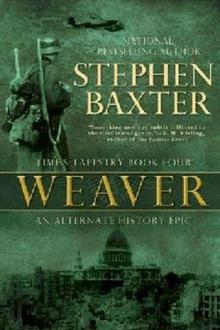 Weaver tt-4
Weaver tt-4 Landfall: Tales From the Flood/Ark Universe
Landfall: Tales From the Flood/Ark Universe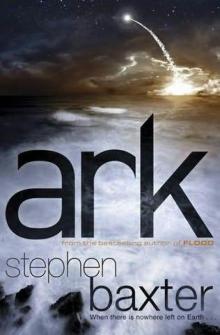 Ark
Ark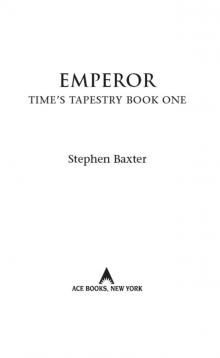 Emperor: Time’s Tapestry Book One
Emperor: Time’s Tapestry Book One Space
Space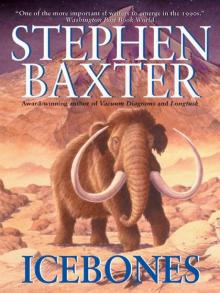 Icebones
Icebones Manifold: Space
Manifold: Space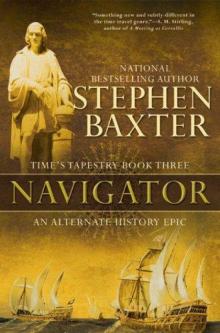 Navigator
Navigator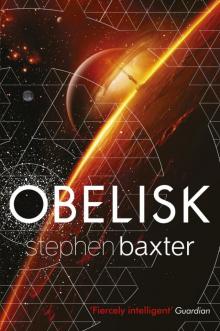 Obelisk
Obelisk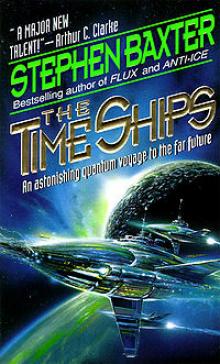 The Time Ships
The Time Ships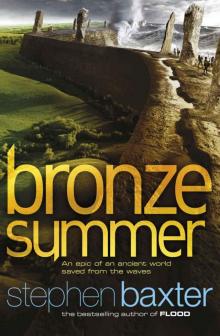 Bronze Summer
Bronze Summer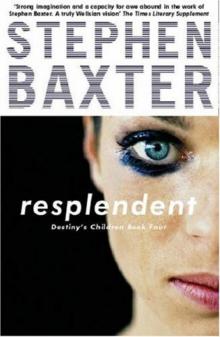 Resplendent
Resplendent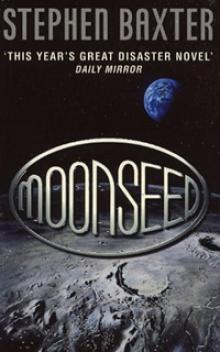 Moonseed n-3
Moonseed n-3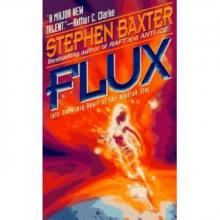 Flux xs-3
Flux xs-3 Transcendent dc-3
Transcendent dc-3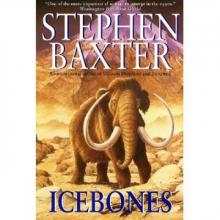 Icebones tm-3
Icebones tm-3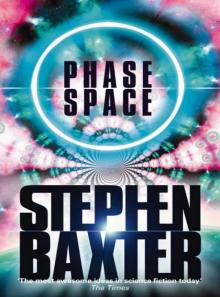 Phase Space
Phase Space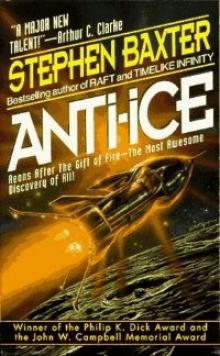 Anti-Ice
Anti-Ice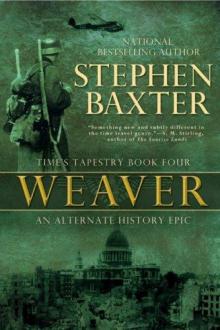 Weaver
Weaver Voyage
Voyage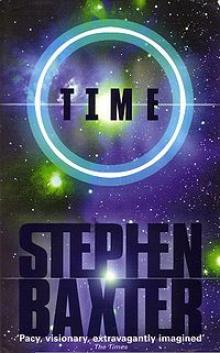 Time m-1
Time m-1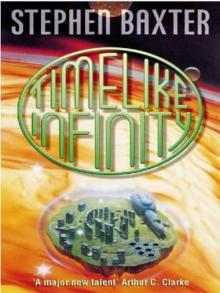 Timelike Infinity
Timelike Infinity Exultant dc-2
Exultant dc-2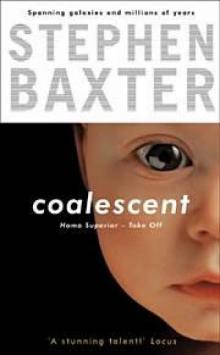 Coalescent dc-1
Coalescent dc-1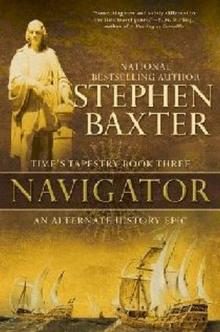 Navigator tt-3
Navigator tt-3